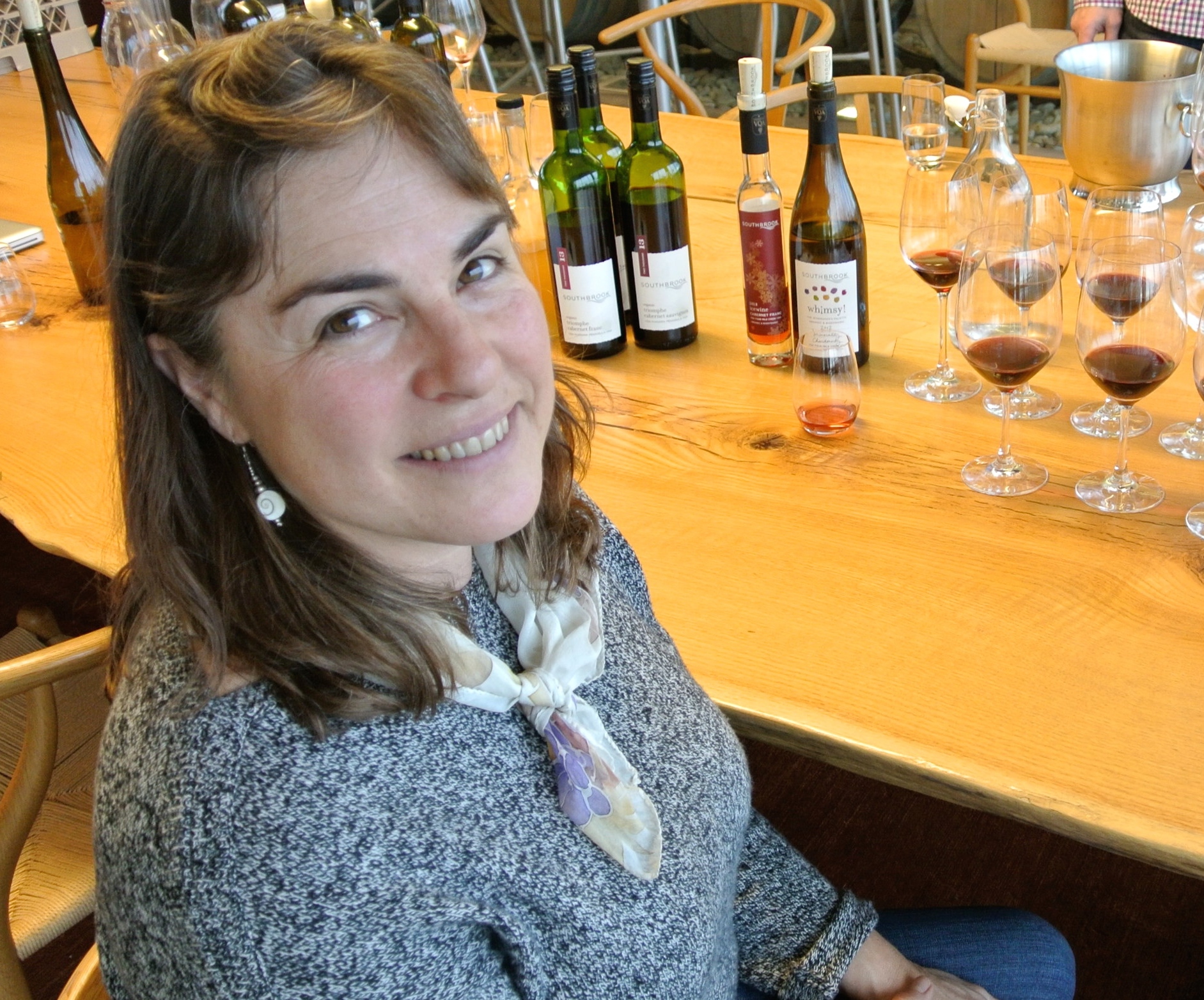 It’s eerily quiet on the Sunday morning just after Christmas in Niagara-on-the-Lake. The long, periwinkle wall at Southbrook Vineyard shimmers even in the dull light of a dreary winter’s day in wine country.
It’s eerily quiet on the Sunday morning just after Christmas in Niagara-on-the-Lake. The long, periwinkle wall at Southbrook Vineyard shimmers even in the dull light of a dreary winter’s day in wine country.
We’re here to get a preview of winemaker Ann Sperling’s top-tier wines at Southbrook (that’s her above), and why she chose this day to do it is a mystery to us (the us being Toronto-based wine writer Michael Godel and myself) but we have no complaints.
The winery, one of the most striking in Canada from a visual point of view, is essentially closed this early on Sunday and Sperling, along with marketing director Paul DeCampo, have set us up in the fully glassed-in centre tasting room that dramatically overlooks the vineyard.
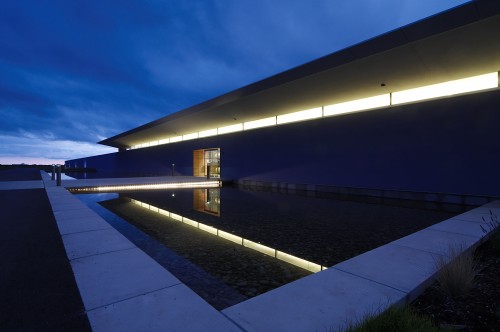 On the agenda are wines from Southbrook’s Triomphe, Whimsy!, and Poetica tiers along with a special project wine Sperling has been tinkering with — an all-natural “orange” wine that is as intriguing as it looks.
On the agenda are wines from Southbrook’s Triomphe, Whimsy!, and Poetica tiers along with a special project wine Sperling has been tinkering with — an all-natural “orange” wine that is as intriguing as it looks.
First, a little background.
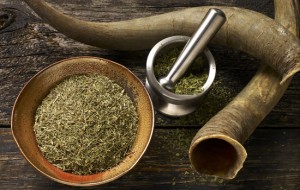 Southbrook farms its vineyards organically and biodynamically with a fervent respect for the soil, water and ecosystems. From the very beginning Southbrook has sought to provide a good example of what is possible in Ontario, and to pursue certification to back it up.
Southbrook farms its vineyards organically and biodynamically with a fervent respect for the soil, water and ecosystems. From the very beginning Southbrook has sought to provide a good example of what is possible in Ontario, and to pursue certification to back it up.
So went the thinking behind the philosophy behind at Southbrook Vineyards.
According the vision statement: “The soil beneath our feet was perfect for the vines we wished to cultivate. Better still, it had lain fallow for countless years before planting, thereby offering the clean slate we’d hoped for.”
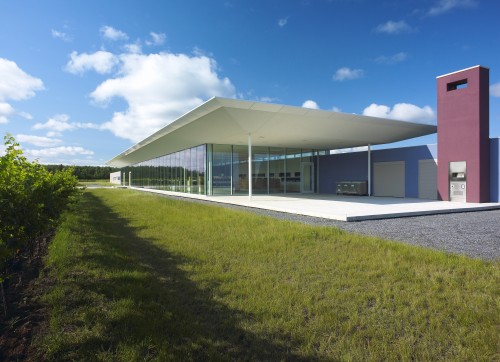 Southbrook set out to prove that biodynamic, organic and other green initiatives can work in an Ontario vineyard.
Southbrook set out to prove that biodynamic, organic and other green initiatives can work in an Ontario vineyard.
Certifications at Southbrook now include: Demeter, Pre-Cert Organic, LEED (Leadership in Energy and Environmental Design), Sustainable Winemaking Ontario, LFP (Local Food Plus), VQA (Vintners Quality Alliance) for grape wines and QC (Quality Certified) for fruit wines.
Aspiring to, and achieving these goals, is not easy and, above all, takes total commitment from first the owners of Southbrook (Marilyn and Bill Redelmeier), and then the vineyard manager (Scott Jones) but ultimately, the winemaker, Sperling.
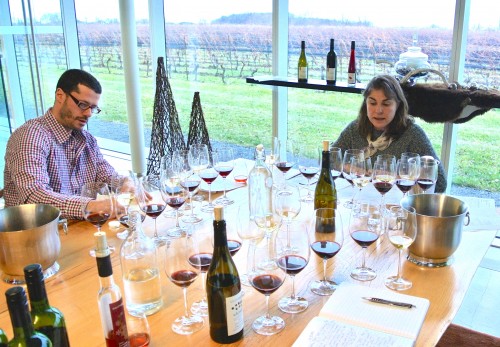 She is a leading force and a true advocate in the Canadian movement towards organic and biodynamic winemaking, with over two decades of experience in winegrowing, winemaking and consulting for successful winery startups.
She is a leading force and a true advocate in the Canadian movement towards organic and biodynamic winemaking, with over two decades of experience in winegrowing, winemaking and consulting for successful winery startups.
Sperling’s roots are deeply embedded in the terroir of winegrowing. Raised on a family vineyard in the Okanagan, Sperling began early on recognizing, developing and appreciating the fine balance within the characteristics of the fruit and its effects on wine. She completed her food sciences degree at UBC and has continued her path of learning and exploration since she entered the wine industry full-time in 1984.
Sperling has played pivotal roles in the start-ups of both B.C.’s CedarCreek winery and Niagara’s Malivoire Wine Company.
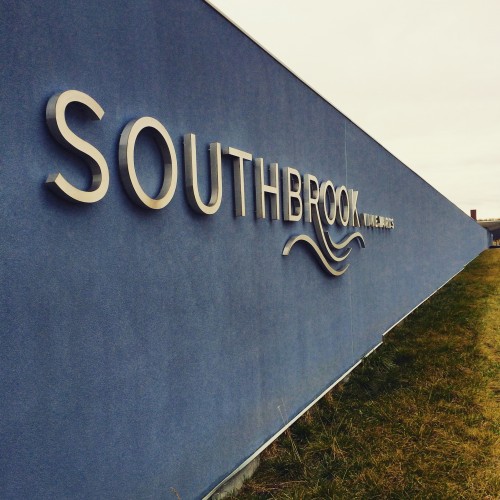 She also makes the wine at her family winery, Sperling Vineyards, in Kelowna, and owns, along with husband Peter Gamble, Versado, a boutique Argentine winery in Mendoza where Sperling is crafting spectacular Malbecs.
She also makes the wine at her family winery, Sperling Vineyards, in Kelowna, and owns, along with husband Peter Gamble, Versado, a boutique Argentine winery in Mendoza where Sperling is crafting spectacular Malbecs.
I have tasted with Sperling many times, both in Niagara at her winery in B.C. where she farms and lives by the same rigid principles set out by Southbrook. One thing is always present: Her unflappable belief in a more natural way of making wine. For Sperling it starts in the vineyard with organically-biodynamically grown fruit, and it continues in the winery with as little human intervention as possible in the winemaking process.
Sperling is a believer and she has never strayed from those beliefs.
Here’s a sampling of what we tasted and what you can expect down the road from Southbrook’s top tier wines.
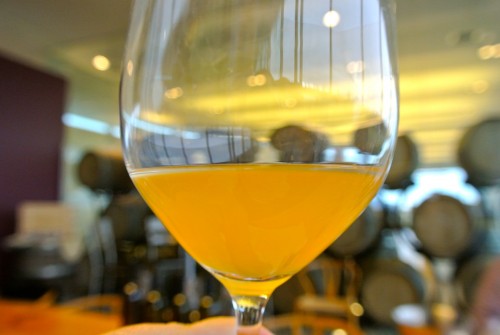 Mystery Orange Wine (or, The Wine With No Name) — It will be coming soon, a curious little thing, with a funky name like Whimsical, Whimsy², or Funk a l’Orange, but I’m guessing at the name, and Sperling doesn’t have a clue what to call it, or at least she wasn’t telling us.
Mystery Orange Wine (or, The Wine With No Name) — It will be coming soon, a curious little thing, with a funky name like Whimsical, Whimsy², or Funk a l’Orange, but I’m guessing at the name, and Sperling doesn’t have a clue what to call it, or at least she wasn’t telling us.
It felt a lot like Godel and I were lab rats on this one as Sperling gauged our responses to the cloudy orange/copper-glowing elixir in our glass, watching intently as we swirled, held the wine to the light, and tentatively sipped and spit.
It was certainly an aromatic wonder, all citrus-y with lime zest and equal parts tropical and pear-apple fruit notes, but it takes some thought to nail the complex components on the nose. It gets more interesting in the mouth. There is texture, body and soul; there is something alive about this wine. The citrus fruit is substantive, pulpy, yet clean, with a lively, zesty and tangy freshness but also shows elegance and poise and makes you think and wonder, what is this? At the heart of this compelling wine is a vibrant core of racy acidity that props up all the components and energizes the palate.
Sperling won’t say what is because, she says, the varietal is not important, only where it came from and how it came to be in our glass.
It’s best described as an all-natural orange wine, perhaps the very first in Canada, though there are rumours of others in various stages of readiness in a few cellars here and there.
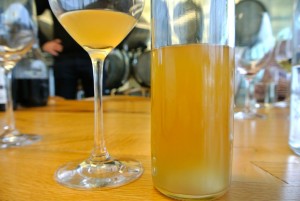 It comes from the organic-biodynamic vineyards of Southbrook and is “natural” in every sense of the word: Wild yeast fermented, no temperature control whatsoever, no wood influence and no sulphites, that’s ZERO sulphites, which is very important to understand and extremely risky to attempt.
It comes from the organic-biodynamic vineyards of Southbrook and is “natural” in every sense of the word: Wild yeast fermented, no temperature control whatsoever, no wood influence and no sulphites, that’s ZERO sulphites, which is very important to understand and extremely risky to attempt.
The grapes, picked in October, are whole cluster fermented with some skin contact (this is where the colour is derived) with a modest 11.8% alcohol.
Sperling says she has been waiting to make a wine like this “for a long time” and says it is only possible when “you have the structure in the vineyard” to support the wine.
It is that “structure” that Sperling is chasing with her interpretation of orange wine.
The only decision left to be made before it is available for consumers, aside from naming the wine, is whether of not to filter it, which I hope she doesn’t. After coming this far, what’s a little fog in the glass going to do to a consumer’s perception?
My immediate guess on the varietal went to Riesling, because of the racy acidity and citrus notes, but picking Riesling in the middle of October? Unlikely. How about Chardonnay? Fraught with problems. So then, could it be Vidal? Crazy, but think about it. Thick skinned, doesn’t break down, highly aromatic, doesn’t lack for acidity. I’m locking and loading that as my guess.
For another take on this wine, and some educated guesses on the varietal(s) used, see Michael Godel’s post here.
The Triomphe Tier
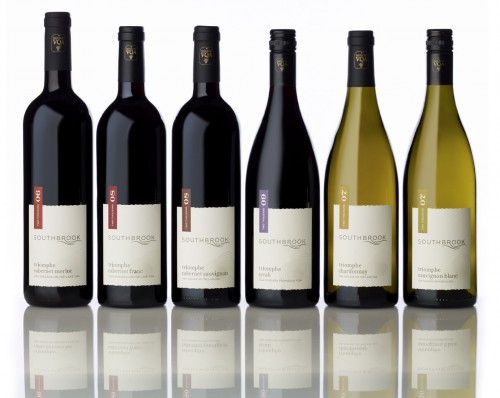 Triomphe is the mainstay of Southbrook’s six wine families. The name is derived from the Latin triomphus, the legendary song of praise to Bacchus, god of wine in Greek mythology. As previously mentioned, all estate grapes are organically-biodynamically farmed and grown. Some sourced fruit is organic only.
Triomphe is the mainstay of Southbrook’s six wine families. The name is derived from the Latin triomphus, the legendary song of praise to Bacchus, god of wine in Greek mythology. As previously mentioned, all estate grapes are organically-biodynamically farmed and grown. Some sourced fruit is organic only.
 Southbrook Triomphe Merlot 2013 ($22, available now, 89 points) — Quite fragrant with juicy cherry, cassis and raspberry notes and lightly toasted spices. It’s finessed and fresh on the palate with bright cherry, anise and hints of spice.
Southbrook Triomphe Merlot 2013 ($22, available now, 89 points) — Quite fragrant with juicy cherry, cassis and raspberry notes and lightly toasted spices. It’s finessed and fresh on the palate with bright cherry, anise and hints of spice.
Southbrook Triomphe Cabernet Franc 2013 ($22, available in February, 88 points) — From sourced organic fruit with a nose of crushed herbs, raspberry, bramble bush and spice in a lean style. The red fruits on the palate are joined by herbs, toasted spices and bright acidity.
Southbrook Triomphe Cabernet Sauvignon 2013 ($22, LCBO November, 89 points) — The nose displays blackberries, currants, vanilla, nutmeg and cedar notes. It has pretty good structure on the palate with dark and red fruits and integrated spices. Well balanced through the finish.
The Whimsy! Tier
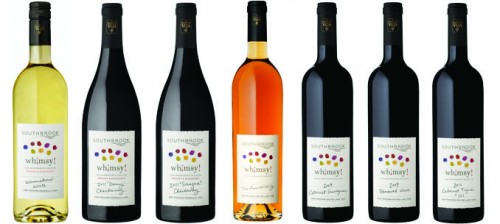 These are small batch, artisanal wines that keep life interesting for Sperling and her team. Each paint dab on the label represents a different varietal in the Southbrook palette. The Whimsy! wines strive to push limits.
These are small batch, artisanal wines that keep life interesting for Sperling and her team. Each paint dab on the label represents a different varietal in the Southbrook palette. The Whimsy! wines strive to push limits.
Southbrook Whimsy! Semillon 2013 ($35, 91 points) — Simply delicious! A gorgeous nose of pear, baked apples, melon, beeswax, lanoline and spice. This is finished unfined and aged on the lees with only minimal sulphites added. It has beautiful texture on the palate with creamy apple and pear and just a touch of citrus zest on the finish. A substantial Semillon that shows finesse and purity.
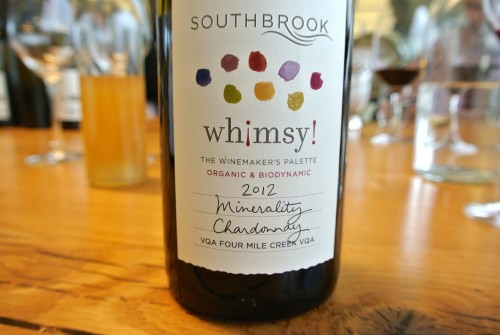 Southbrook Whimsy! Minerality Chardonnay 2012 ($35, released soon, 92 points) — A subtle reductive note is what gives this interesting Chardonnay its personality and also provided a challenge for VQA tasters who failed it the first time around. The wine is aged in tight-grained French oak, 40% new, 12% one-year-old barrels and the rest neutral. The nose shows creamy pear, smoke, hazelnuts, ripe spiced apple and piecrust. Such flavours in the mouth! Intense poached pear, cream, sweet baking spices, elevated minerality and balancing acidity through a long finish.
Southbrook Whimsy! Minerality Chardonnay 2012 ($35, released soon, 92 points) — A subtle reductive note is what gives this interesting Chardonnay its personality and also provided a challenge for VQA tasters who failed it the first time around. The wine is aged in tight-grained French oak, 40% new, 12% one-year-old barrels and the rest neutral. The nose shows creamy pear, smoke, hazelnuts, ripe spiced apple and piecrust. Such flavours in the mouth! Intense poached pear, cream, sweet baking spices, elevated minerality and balancing acidity through a long finish.
Southbrook Whimsy! Cabernet Franc 2012 ($35, released soon, 91 points) — 2012 provided perfect conditions for the Bordeaux varietals in Niagara. The nose shows black cherry, currants, anise and underlying herbs and spices. The cherry-cassis fruit on the palate is melded to interesting oak spices and herbs and maintains its vibrancy through the finish. Should age gracefully in the cellar.
Southbrook Whimsy! Cabernet Sauvignon 2012 ($35, released this spring, 89 points) — Another red for the cellar with a tight, slightly closed nose of blackberry, cassis, caramel, oak spices and black licorice. It’s big and concentrated on the palate with structure to go with meaty dark fruits, earth and spice. Cellar five or more years.
The Poetica Tier
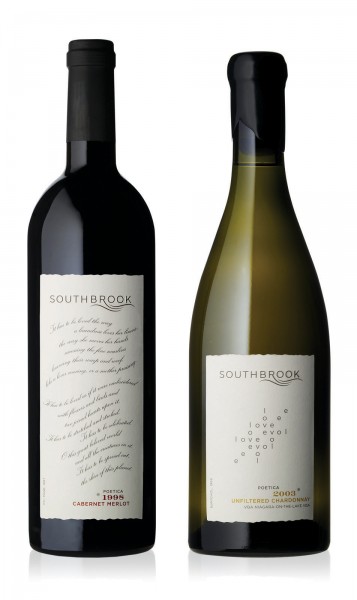 Poeticas are not made every year. When the vintage excels, Southbrook selects one white and/or one red to become Poetica. The poetry on the labels is drawn from the work of a wide cross-section of talented Canadian poets and reflects, in some way, a love theme. The wine honours the poem on the label, and the poem honours the wine in the bottle.
Poeticas are not made every year. When the vintage excels, Southbrook selects one white and/or one red to become Poetica. The poetry on the labels is drawn from the work of a wide cross-section of talented Canadian poets and reflects, in some way, a love theme. The wine honours the poem on the label, and the poem honours the wine in the bottle.
There have been 14 wines made in the Poetica family featuring outstanding vintages from 1998 to 2010. These grape varieties demonstrate what Southbrook loves about the terroir of Niagara-on-the-Lake. Most are from tiny batches, with limited edition numbering on the bottles.
Southbrook Vineyards Poetica Chardonnay 2012, Niagara ($50, spring release, 93 points) — The poetry for the 2012 Poetica labels is from Canadian author, poet, and Academy Award-nominated actor Chief Dan George. “I’m looking for elegant wines that get bigger (with age),” says Sperling. She turns to Bordeaux for inspiration in her red Poetica and Burgundy for the white version. The 2012 version of the Poetica Chardonnay is as beautiful a wine as I can remember. It has a nose of ripe pear, toasted cashew, baking spices, citrus and a subtle reductive note. It is seductive and textured on the palate with creamy, rich fruit and toasted vanilla and spice that’s lifted by vibrant acidity through the finish. The wine is whole cluster pressed with the clear juice sent directly to French oak barrels, 15% new, for 14 months.
Southbrook Vineyards Poetica Red 2012, Niagara ($55, spring release 93 points) — The red version of Poetica is a blend of Cab Sauv (46%), Cab Franc (26.5%), Petit Verdot (26.5%) and a touch of Merlot. Such a wonderful and expressive nose of rich, meaty blackberry, cherry and a complex array of oak spices. This has structure and grip with lovely red and dark fruits that build on the palate and meld with an array of spices and firm tannins. Needs time to integrate but the rewards will be worth waiting for. This could very well turn out to be a benchmark red for the vintage in Niagara.





Comment here